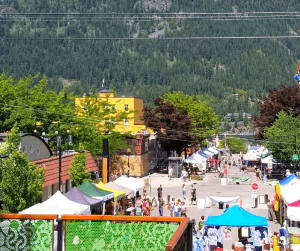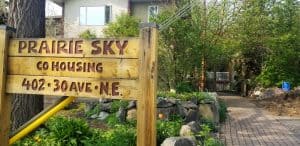Photo by Jason Dent on Unsplash
We’ve all delivered an elevator pitch. Whether during a stress-inducing job interview or a mandatory networking event, the elevator pitch should communicate what a person or organization brings to the table. A good one is persuasive, being concise and focused on benefits.
Of course, a town needs one too. And you don’t want to be tripping over your words or launching into a 10-minute-long monologue when you want to promote your community.
But communicating why people should be interested in you in a short, pithy way is hard. That’s why taking the time to perfect your town’s elevator pitch is important. A solid sales pitch helps you be your town’s ambassador in a way that persuades people to consider making the town their home, investing in its businesses, or visiting on their vacation.
Producing a perfect pitch
So, what’s an elevator pitch and how do you create one for a town?
Imagine you have a great idea to get across to someone. They’ve just stepped into an elevator with you, and you have until it stops to tell them about it. You need to give them everything they need to know — and make it persuasive — in this short amount of time. If you don’t have something ready ahead of time, what you say will be confusing and jumbled.
That’s the idea of an elevator pitch — making a persuasive argument quickly (with or without the elevator).
With an elevator pitch handy, community leaders like you can give potential residents, enthusiastic entrepreneurs, or interested investors reasons to spend both their time and money in your town.
Setting your town apart
Step one? Find your town’s unique value proposition or UVP.
More than a simple slogan, a UVP speaks to what sets a person or business apart. It’s the “zhuzh” that convinces someone to hire one candidate over another. Or the deciding factor for choosing one construction company over a competitor. For you, it’s the offering that persuades someone to move to or invest in your community.
So, what’s your town’s UVP?
Think about who you’re pitching to
A critical early step in discovering your UVP and developing an elevator pitch is to define your target audience. Are you trying to entice young homeowners to move to your little slice of heaven? Or are you hoping to attract big companies? Perhaps you simply want people to stop for a piece of pie at your Main Street diner.
Our guess is that you want all three — new residents, investment, and tourism. But choosing to prioritize one over another is important in effective communications, and the elevator pitch is only one part of what should be a larger strategy.
So, the trick is to assess your assets and highlight what matters most to your audience. And we don’t just mean highlighting a feature of your town. A tax incentive or daycare is great. But a lot of towns might have one or both of those. What combination of features make your town unique? (We like to call this your “hometown advantage”). How does this unique combination of town features help your audience solve a problem? In what ways could they benefit from your town?
Let’s say your town has low taxes, a daycare co-op, facia or facade restoration grant, and fast internet. Perhaps it says your town is business-friendly, welcomes young families, and cares about community. Young entrepreneurs with families may see each of those as a benefit. More young families can attract big business, and a well-maintained main street is great for tourism. And this is also how an elevator pitch designed for young families fits into a broader strategy to attract business and tourism.
What are others pitching?
Now it’s time to think about your competitors. How do you stand out from your audience’s other options? Enticing them from big city living is one way. Or maybe even other towns or provinces. Your audience needs a place to live, sure, but they may also value a slower pace, the small-town life, and non-existent commute. Often the benefits of rural are an attraction in themselves.
But your UVP — surprise, surprise — should be unique from your competition. If the next town over also has a sports centre, perhaps focus your UVP on another amenity, like fibre optic internet.
Don’t forget the benefits!
But don’t just focus on the features (things and stuff in town). Think about what living in town can help someone achieve, why these qualities make it stand out from the crowd. Highlight the benefits of living in your town and use these to your advantage.
No matter if it’s a tale of two towns — or Dog River and Wullerton situation — know what makes you different and how that could entice your audience.
Rosthern, for example, had an old train station and folks who like plays. So, they started an arts co-op with a theatre. Now the town is well-known as an arts centre and people routinely visit the town because of it. That’s pretty unique!
How to avoid having your pitch fall flat
When you’re developing your town’s elevator pitch and its UVP, it can be tempting to cast the broadest net possible. But it’s almost impossible for your unique selling proposition to be truly remarkable when appealing to multiple audiences — and for good reason.
New homeowners probably aren’t interested in how low your town’s commercial property taxes are. Likewise, third-party investors may not care how beautiful your town’s park is. But, together, they tell a compelling story.
Now there’s nothing wrong with creating two elevator pitches for different audiences, but it pays to produce one perfect pitch. Because no one and nothing can please everyone and trying to target multiple audiences may make your pitch fall flat.
Put it all together and form your pitch
A community with a successful UVP is Nelson, B.C. A glance at their website shows you their target audience is people looking for adventures in the mountains. Knowing competing towns in the Selkirk mountains offer similar experiences, Nelson’s UVP promises a unique experience for both nature and history lovers. Nestled next to Kootenay Lake, Nelson has 350 heritage buildings and the famous Baker Street. That’s compelling.
With UVP in hand, you’re nearly done. As with Nelson, UVPs suggest the community’s character and do so attractively and convincingly. They also give you an idea of who your town is appealing to, and why they should choose your community over the next one.
Here are four handy tips for working on your town’s elevator pitch.
- Whether you’re talking to prospective house owners or investors interested in your Main Street, your pitch should be persuasive. Being persuasive doesn’t mean being a smarmy salesperson — it’s about being aware of your value and how that meets someone else’s needs. Communicate this confidently, and you’ll be persuasive.
- Be sure to understand your audience and their interests. It’s equally important to know the main things your town can offer.
- It’s easier to create an elevator pitch for your town when you have an intended goal. Set your goal, whether it’s attracting new house owners or investors, and stick with it. (A secondary benefit of this is that it’s measurable.)
- Finally, keep your pitch short and sweet — no longer than an elevator ride. If you see your audience looking for exit signs, you know you need to reel your pitch.
Now, go tell the world about your amazing town!
Get more great ideas about how to use your hometown advantage at hometownadvantage.ca.

 Written by
Written by 



